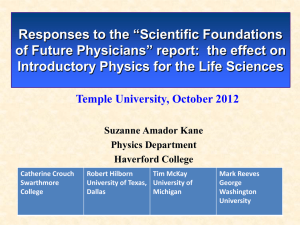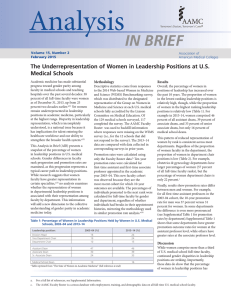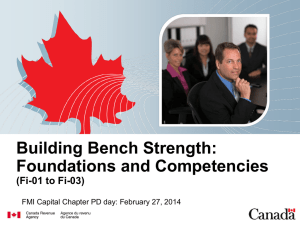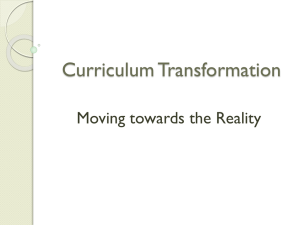Dr. Corbett`s SLIDES - University of Kansas Medical Center
advertisement
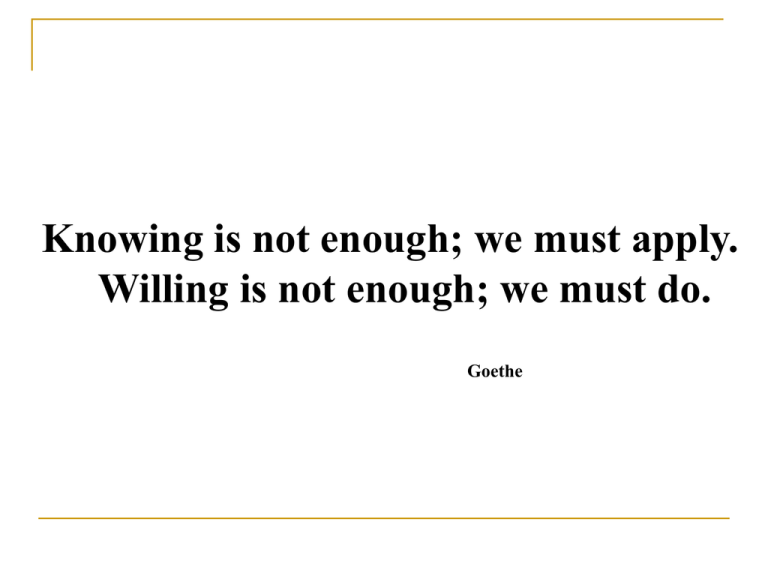
Knowing is not enough; we must apply.
Willing is not enough; we must do.
Goethe
Clinical Skills Education
Considerations on…
Why, What & How?
Eugene C. Corbett, Jr., M.D., FACP
Brodie Professor of Medicine
Professor of Nursing
University of Virginia
Chair, AAMC Task Force on Clinical Skills Education
Agenda
What is skill learning?
Why the emphasis on skills education now?
Knowledge versus skills education
Does curricular emphasis make a difference?
How?
AAMC Task Force recommendations
Some examples of clinical skills teaching
Some closing tips for skills teaching
In skills education….
….the accent is upon learner doing!
….upon the application of knowledge and
understanding to an intellectual,
psychomotor or affective activity
What is skill learning?
Reflect on your own skill development…
Think of anyone (teacher, friend, family
member…) who has been most helpful to you
in developing a skill that you are good at.
What is the skill?
What did they do to help you learn to do that
skill?
General Principles of
Skills Teaching & Learning
It has a clear and specific purpose
It reinforces knowledge and understanding
It must be demonstrated well
An opportunity to try it out
An opportunity to practice it
Coaching (observation) and
Useful evaluation and helpful feedback
Emphasis upon self-directed initiative
Guided by an explicit performance standard
Guided by a high performance standard
Confidence-building opportunity in direct patient care
Knowledge Acquisition vs
Skill Development
DOMAIN
KNOWLEDGE
SKILL
Teacher Role
lecture
mentor
Activity Center
teacher
learner
Learning
Opportunity
anytime
limited
Learning
Increment
variable size
discrete &
well defined
Assessment &
Feedback:
anytime
as soon as possible
Setting
almost anywhere
clinical/simulated
Need for repetition:
variable
mandatory
Why the emphasis on skills education?
Patient care is an applied activity
Performance emphasis is increasing at all levels of our
professional activity
Medical school skills education has been slipping
We want better UME clinical performance outcomes
Competency-based Clinical
Performance Outcomes in
Medical Education & Practice
• LCME: Medical Education Objectives and
Documentation of Students’ Clinical
Experience
• USMLE Clinical Skills Examination
• AAMC: Students Clinical Skills Education
• ACGME Postgraduate competencies
• IOM: Medical Error in the caring process
• JCAHO: Hospital Performance Measures
• 3rd Party Payers: Physician Pay-for-Performance
Abraham Flexner
“On the pedagogic side, modern medicine,
like all scientific teaching, is characterized
by activity. The student no longer merely
watches, listens, memorizes: he does. His
own activities in the laboratory and in the
clinic are the main factors in his instruction
and discipline. An education in medicine
nowadays involves both learning and
learning how; the student cannot effectively
know, unless he knows how.” (1910)
The Purpose of
Undergraduate Medical Education
…to provide for the development of the
knowledge, skills and values necessary
to undertake the life-long responsibilities
of a physician….
UME Clinical Skills Education:
(It looks weak!)
• It is not explicit in the curriculum
• It is variable within a school
• It is not standardized across schools
• It is not explicitly developmental
over the 4 year curriculum
• It is only loosely connected to GME
expectations
Some AAMC Medical School Data:
1.
Competency-based skill learning objectives
2.
Any formal skills curricula
52%
3.
Skills curricula in clinical years
13%
4.
Explicit list of skills to be learned
21%
5.
Clinical skills education facility
59%
6.
Standardized patients/assessment
65%
26%
UVA CLINICAL SKILLS SURVEY
Student Self-estimate of Skill Performance
(2003)
Hepatic size & consistency
Basic CPR
Suture a Laceration
Observe & interpret a Gallop
Interpret spirometry
Do a peak pulmonary flow
Work with a reluctant nurse
Phone: a swallowed penny
Jugular venous pulsation
Simple forearm cast
77%
73%
72%
65%
62%
52%
52%
45%
38%
8%
UVA Post-clerkship OSCE data
(2006)
Score Above the Median
Score Below the Median
Skill
Critical Action
Correct
Critical Action
Incorrect
Critical Action
Correct
Critical Action
Incorrect
Detect an Arrhythmia (n=45)
17.8%
13.3%
20%
48.9%
Maintain Aseptic Technique
(n=110)
1.8%
46.4%
0%
51.8%
Measure Blood Pressure
(n=119)
35.3%
10.1%
28.6%
26.0%
Maintain
Confidentiality (n=118)
22.0%
0%
4.3%
73.7%
Perform an ECG (n=26)
3.8%
42.3%
0%
53.9%
Phone Triage an Infant with
Fever (n=23)
26.1%
21.7%
0%
52.2%
Communicate Through an
Interpreter (n=41)
4.9%
21.9%
9.8%
63.4%
Manage a Medical Error
(n=46)
26.1%
21.7%
2.2%
50.0%
Examine Child’s Ears (n=33)
30.3%
18.2%
0%
51.5%
Auscultate the Second Heart
Sound (n=33)
30.3%
6.1%
9.1%
54.5%
A 4th Year Medical Student
(2006)
“While in medical school we are continually
encouraged to master a common body of
knowledge, we are not as expected to master
clinical skills. After reviewing my performance
on videotape, I realize that I also have to master
the skills of the patient encounter.”
Clinical Skills Education,
Curricular Emphasis…
Does it make any difference in clinical
learner performance outcomes??
0
0
-1
95
5
-9
90
0
-9
85
5
-8
80
0
-8
75
5
-7
70
0
-7
65
5
-6
60
0
-6
55
5
-5
50
0
-5
45
5
-4
40
25
New Curriculum
20
15
10
#
Students
25
Old Curriculum
20
15
#
Students
Overall Score on 4th Year Clinical Skills Assessment
35
30
10
5
0
35
30
5
0
0
5
-4
0
-5
5
-5
0
-6
5
-6
0
-7
5
-7
0
-8
5
-8
0
-9
5
-9
0
-1
95
90
85
80
75
70
65
60
55
50
45
40
DUTCH CLINICAL SKILLS OUTCOMES
AAMC Task Force on
Clinical Skills Education,
a key consensus issue:
How do we define basic clinical method?
What are the essential clinical
competencies for UME??
www.aamc.org/meded/clinicalskills/ 2005, 2008
Medical Education:
begin with the end in mind…
Clinical Competency Domains
=
Medical Education Objectives
12 Clinical Competency Domains
of Basic Clinical Method
AAMC 2005
#1-3. Three competencies that students bring to
medical school in varying degrees of
development
#4-8. The five elementary competencies
#9-11. The 3 clinical management competencies
#12.
The most practical clinical competency
Basic Clinical Method
The 3 competencies that students bring in
varying degrees of development to
medical school:
1. Professionalism
2. Patient engagement & communication
3. Scientific knowledge & method
Basic Clinical Method
The 5 elementary competencies:
4. Clinical history-taking
5. Mental & physical examination
6. Clinical tests & imaging
7. Basic clinical procedures
8. Clinical information management
Basic Clinical Method
The 3 case management competencies:
9. Diagnosis & differential diagnosis
{defining the clinical problem}
10. Clinical Intervention
{caring for the clinical problem}
11. Clinical prognosis
{anticipating and planning for
future healthcare outcomes}
AAMC 2005
The final universal clinical competency:
12. The ability to provide the patient’s
care within the context of
the patient and their preferences,
family preferences,
economic, cultural,
ethical, legal,
healthsystem,
and societal preferences and constraints.
ACGME 1999
1.
2.
3.
4.
5.
6.
Professionalism
Interpersonal & communication skills
Medical knowledge
Patient care
System-based practice
Practice-based learning & improvement
ACGME for UME??
Patient Care
Professionalism
Interpersonal & communication skills
Medical knowledge
System-based practice
Practice-based learning & improvement
How?
What are some examples of skills teaching?
Some practical tips
for clinical skills teaching…
Keep in mind the 12 domains of basic clinical method
Specifically speaking, there are many basic clinical
skills to teach and learn
Choose to your strengths but add on some others
Make it case-based if at all possible
Please don’t worry about being too basic
Know your learners and what they can do
In the clinical setting, delegate clinical task doing
whenever you can
Encourage others (including your residents) to do the
same
Some practical tips
for clinical skills teaching…
Observe your learners more and give them
performance feedback whenever you can
Set up your expectations explicitly ahead of time!
Encourage your patients to help out!
Encourage yourself and your colleagues to lecture
less and mentor more in the clinical setting
Practice makes perfect at all levels
Help set higher standards for clinical skills teaching
and learning
Make it fun!
800
700
600
500
400
300
200
100
0
1972-73
1984-85
1995-96
Baylor
Case
Chicago
Cornell
GW
Minnesota
Nebraska
Pittsburg
Tulane
U Mass
UNC
USC
Wisconsin
Average
Organizing Clinical Skills Education
By the spectrum of clinical care:
Emergency care
Acute care
Critical care
Chronic care
Palliative & terminal care
Wellness & preventive care
Population Care

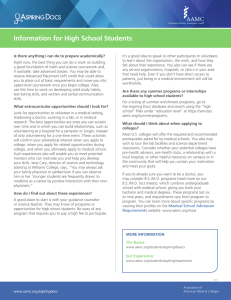
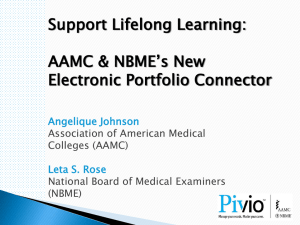
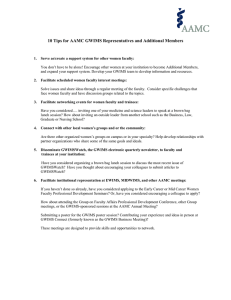
![Faculty Forward [PDF]](http://s2.studylib.net/store/data/005260716_1-e64c3a84465fecffce46203374b03bc3-300x300.png)

